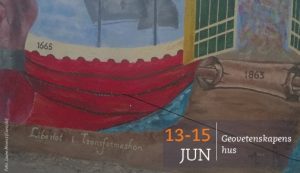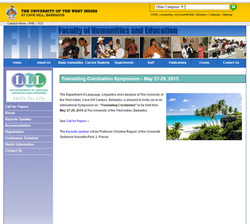The multifunctionality of Papiamentu pa and its similarities with Brazilian Vernacular Portuguese

Marco Aurelio Schaumloeffel
Presentation at the ACBLPE (Association of Portuguese and Spanish-Lexified Creoles) Annual Meeting. Stockholms Universitet. Stockholm, Sweden. June 13-15, 2017
Conference programme
Conference website
Abstracts (pages 24-25)
References
Abstract
The multifunctionality of Papiamentu pa and its similarities with Brazilian Vernacular Portuguese
The Papiamentu (PA) lexical item pa can cover several functions, operating as preposition, mood marker and complementizer. Its functions actually clearly exceed those of its equivalent Portuguese lexical item para, not only covering the semantic load of para, but also that of por and a. An equivalent multifunctionality for this lexical item can also be found in other Portuguese-based creole languages like the Upper Guinea Portuguese Creoles (cf. Jacobs, Origins of a Creole) and the Asian Portuguese creole Papiá Kristang. When analysing the PA lexical item pa, Lefebvre and Therrien (On the properties of Papiamentu pa: Synchronic and diachronic perspectives, 2007) establish that it can perform fifteen different functions. Out of those, they only find five that have an equivalent realisation in current standard Portuguese. Lefebvre and Therrien believe that PA pa is derived from Portuguese para, and that its other properties would be derived from corresponding lexical entries in the PA substrate languages, more specifically from the properties of the Fongbe preposition and complementizer nú, and the mood marker and complementizer ní. However, when Brazilian Portuguese, and especially Brazilian Vernacular Portuguese (BVP) is considered, the degree of equivalence with the PA functions of pa changes dramatically. The aims of this presentation are to show the high degree of similarity that exists between PA and BVP when it comes to the functions of PA pa, and to make considerations as to why this sharp discrepancy exists if compared to the results found by Lefebvre and Therrien for current standard PT. Apart from that, the secondary aim is to ponder why this multifunctionality and equivalence in some functions can also be found in Papiá Kristang, a Portuguese-based creole from another branch that is knowingly not directly related to PA or to the West African Portuguese-based creoles.
